Brazilian Jiu Jitsu vs Judo – A Comparative Analysis
Table of Contents
- Introduction
- Historical Background
- Philosophical Foundations
- Core Techniques and Training Focus
- Scoring Systems and Competitive Rules
- Uniforms and Rank Structures
- Self-Defense Applications
- Physical and Mental Benefits
- Common Misconceptions
- Choosing the Right Martial Art for You
- Conclusion
1. Introduction
Martial arts are diverse disciplines that blend physical prowess, strategic thinking, and philosophical depth. Among the many martial arts practiced worldwide, Brazilian Jiu Jitsu (BJJ) and Judo stand out due to their distinct approaches to grappling and self-defense. Both arts have garnered global followings and have made significant impacts on combat sports and self-defense training. Despite their similarities, BJJ and Judo differ in their techniques, training methodologies, and underlying philosophies. This blog post aims to explore these differences and similarities, providing a comprehensive comparison to help readers understand each art’s unique attributes. Whether you are a prospective martial artist deciding which path to take or simply curious about these disciplines, this guide will offer valuable insights.
2. Historical Background
Judo and Brazilian Jiu Jitsu share a common ancestry but have evolved in unique directions. Judo was founded by Jigoro Kano in 1882 in Japan. Kano, an educator and jujitsu practitioner, sought to create a martial art that emphasized physical education, moral discipline, and practical effectiveness. He distilled the most effective techniques from various jujitsu schools and created Judo, which means “the gentle way.” Kano’s innovation was to transform traditional jujitsu into a sport that focused on throws and limited the potentially dangerous techniques of striking and joint manipulation.
Brazilian Jiu Jitsu, meanwhile, originated from Judo. In the early 20th century, Mitsuyo Maeda, a Judo expert and student of Kano, traveled to Brazil and began teaching Judo. The Gracie family, particularly Carlos and Helio Gracie, learned from Maeda and adapted Judo techniques, placing a greater emphasis on ground fighting and submissions. This adaptation led to the development of Brazilian Jiu Jitsu, which focuses on leverage and technique to overcome larger opponents. The Gracies’ innovations were put to the test in numerous challenge matches, solidifying BJJ’s reputation as an effective martial art for self-defense and competition. For those looking to deepen their understanding of Brazilian Jiu Jitsu, an excellent resource is available. To learn more about the history, techniques, and benefits of this martial art, be sure to check out this comprehensive article on Brazilian Jiu Jitsu. This guide offers valuable insights for both beginners and experienced practitioners.
The historical divergence of Judo and BJJ highlights their shared roots and unique evolution. While Judo has become a prominent Olympic sport, emphasizing throws and standing techniques, BJJ has carved out its niche in ground grappling and submission, influencing modern mixed martial arts (MMA) and self-defense training.
3. Philosophical Foundations
The philosophical foundations of Judo and Brazilian Jiu Jitsu reflect their creators’ visions and the cultural contexts in which they developed. Judo’s philosophy is deeply influenced by its founder, Jigoro Kano, who emphasized the principles of “Seiryoku Zenyo” (maximum efficiency, minimum effort) and “Jita Kyoei” (mutual welfare and benefit). Kano believed that Judo was not just a physical activity but a way to develop moral character and contribute to society. The concept of “Seiryoku Zenyo” promotes using one’s energy efficiently, applying techniques that require minimal effort for maximum effect. “Jita Kyoei” underscores the importance of cooperation and mutual benefit, fostering a respectful and supportive training environment.
Brazilian Jiu Jitsu, while also valuing efficiency and technique, has a more pragmatic and adaptive philosophy. The Gracie family’s approach to BJJ was grounded in real-world effectiveness. Helio Gracie, in particular, emphasized that proper technique could enable a smaller, weaker person to defeat a larger, stronger opponent. This principle is central to BJJ’s philosophy, which values leverage, timing, and strategy over brute strength. The adaptability of BJJ is evident in its training methods, which often involve live sparring (rolling) where practitioners can test and refine their techniques against resisting opponents. This hands-on approach fosters a deep understanding of grappling dynamics and promotes constant innovation. For those interested in enhancing their knowledge of martial arts, several insightful articles are available.
Both Judo and BJJ share a commitment to self-improvement and respect for others, but they express these values differently. Judo’s structured, educational approach reflects its roots in Japanese culture and Kano’s vision of martial arts as a means of personal and societal development. BJJ’s more fluid, adaptive style mirrors its emphasis on practical application and the Gracies’ focus on real-world combat scenarios.
4. Core Techniques and Training Focus
The core techniques and training focuses of Judo and Brazilian Jiu Jitsu highlight their differing approaches to grappling and combat. In Judo, the primary emphasis is on throws and takedowns. Techniques such as “osoto gari” (major outer reap), “ippon seoi nage” (one-arm shoulder throw), and “harai goshi” (sweeping hip throw) are central to Judo practice. Judoka (Judo practitioners) spend a significant portion of their training on these standing techniques, learning to unbalance their opponents and execute powerful throws. Groundwork, known as “ne waza,” is also part of Judo but is secondary to the standing techniques. On the ground, Judoka practice pins, control holds, and submissions, including joint locks and strangles.
Brazilian Jiu Jitsu, in contrast, focuses heavily on ground fighting. While BJJ practitioners (BJJers) do learn takedowns and standing techniques, the majority of training is dedicated to ground control and submissions. Techniques include a variety of chokes, armlocks, leglocks, and positional controls like guard passing, mount, and back control. Live sparring, or rolling, is a cornerstone of BJJ training, allowing practitioners to apply techniques in a dynamic, resistant environment. This emphasis on real-time application helps BJJers develop a deep understanding of grappling mechanics and adaptability. Lastly, to delve into the theories and techniques of Brazilian Jiu Jitsu, explore Brazilian jiu jitsu theory and technique. These resources offer valuable insights into various aspects of martial arts.
The training methodologies reflect the core objectives of each art. Judo aims to end a confrontation quickly with a decisive throw, emphasizing efficiency and control from a standing position. BJJ, on the other hand, prepares practitioners for prolonged engagements on the ground, teaching them to maintain control and work methodically towards a submission. These differing focuses result in distinct skill sets: Judoka excel in throws and standing grappling, while BJJers are adept at ground control and submissions.
5. Scoring Systems and Competitive Rules
The scoring systems and competitive rules of Judo and Brazilian Jiu Jitsu underscore their distinct objectives and strategies. In Judo competitions, the primary goal is to achieve an “ippon,” which is awarded for a throw executed with significant force, speed, and control, causing the opponent to land largely on their back. An ippon immediately ends the match. If a throw does not meet the criteria for an ippon, lesser scores such as “waza-ari” (half point) and “yuko” (advantage point) can be awarded. Matches can also be won by pinning the opponent on the ground for 20 seconds or through submission via joint locks or strangles. However, the emphasis remains on achieving a decisive throw.
In Brazilian Jiu Jitsu competitions, the scoring system rewards positional control and progression towards submissions. Points are awarded for achieving and maintaining dominant positions, such as mount, back control, and side control, as well as for successful takedowns and sweeps. A match can end by submission if a practitioner forces their opponent to tap out due to a choke or joint lock. In addition to points, some competitions use a submission-only format, where the match continues until one competitor achieves a submission. This format encourages continuous offensive action and technical exchanges.
The differences in scoring and rules create distinct competitive environments. Judo competitions often feature quick, explosive engagements focused on achieving a match-ending throw. BJJ competitions, on the other hand, tend to involve more prolonged, strategic battles for positional control and submission opportunities. Understanding these differences helps practitioners prepare effectively for the specific demands of their chosen sport.
6. Uniforms and Rank Structures
Uniforms and rank structures in Judo and Brazilian Jiu Jitsu are similar but have key differences that reflect the traditions and practices of each art. Both martial arts use a gi, a traditional uniform consisting of a jacket, pants, and a belt that signifies the practitioner’s rank. However, the specifics of these uniforms and rank systems vary.
In Judo, the gi is typically white or blue, with strict regulations on size and fit to ensure uniformity in competition. The durability and design of the Judo gi are intended to withstand the rigors of gripping and throwing. Judoka wear a belt that indicates their rank, with the ranking system divided into kyu (student) grades and dan (black belt) grades. Kyu grades are represented by colored belts, progressing from white for beginners to brown for advanced students. Dan grades are represented by black belts, with higher dan ranks indicated by additional stripes or degrees on the belt.
Brazilian Jiu Jitsu gis come in a variety of colors, including white, blue, black, and others, depending on the competition rules of different organizations. BJJ gis often feature patches representing the practitioner’s school or sponsors. The BJJ belt system starts with white for beginners and progresses through blue, purple, brown, and black belts. Each belt can have degrees or stripes to indicate progress within that rank. Unlike Judo, BJJ does not have a standardized international ranking system, so promotion criteria can vary significantly between schools and organizations. If you’re specifically interested in Brazilian Jiu-Jitsu and want to find the best gear, this article on the Best BJJ Gis offers detailed reviews and recommendations. These resources provide valuable insights and can help you choose the right path and equipment for your martial arts journey.
The uniforms and rank structures not only signify the practitioner’s level of experience but also reflect the cultural and practical aspects of each martial art. Judo’s strict uniform regulations emphasize tradition and uniformity, while BJJ’s more varied gis and personalized patches reflect its focus on individual expression and adaptability. If you are looking for the best Judo uniforms, this guide on the Best judo gi is highly recommended.
7. Self-Defense Applications
Judo and Brazilian Jiu Jitsu both offer effective self-defense techniques, but they approach the concept from different angles. Judo’s emphasis on throws and takedowns is highly valuable in self-defense situations, as the ability to off-balance and throw an attacker can neutralize threats quickly. Techniques such as hip throws, foot sweeps, and shoulder throws allow a defender to use an attacker’s momentum against them, often resulting in the attacker being incapacitated or stunned upon hitting the ground. Additionally, Judo includes techniques for controlling and pinning an opponent, which can be useful for subduing an attacker without causing excessive harm.
Brazilian Jiu Jitsu, with its focus on ground fighting, excels in scenarios where a confrontation goes to the ground. BJJ teaches practitioners how to control and submit an opponent from various positions, making it highly effective for self-defense against larger and stronger attackers. Techniques such as guard retention, sweeps, and submissions enable a person to defend themselves effectively even when on their back. BJJ also emphasizes situational awareness and the ability to de-escalate conflicts, which are crucial for real-world self-defense. To understand the fundamentals of self-defense in Brazilian Jiu-Jitsu, check out Brazilian jiu jitsu self defense.
Both martial arts teach practitioners to remain calm under pressure and to use technique and leverage rather than brute force. This mindset is essential for effective self-defense, as it allows individuals to respond to threats in a controlled and measured way. By training in both Judo and BJJ, practitioners can develop a comprehensive set of skills that prepare them for a wide range of self-defense scenarios, whether standing or on the ground.
8. Physical and Mental Benefits
Training in Judo and Brazilian Jiu Jitsu offers numerous physical and mental benefits that contribute to overall well-being. Physically, both martial arts provide a full-body workout that improves strength, flexibility, endurance, and coordination. The dynamic movements and techniques involved in Judo and BJJ engage multiple muscle groups, promoting functional fitness. Regular training sessions enhance cardiovascular health, agility, and balance. The rigorous physical demands of both arts help practitioners develop resilience and stamina.
Mentally, Judo and BJJ offer unique challenges that foster personal growth and development. The problem-solving nature of grappling requires practitioners to think strategically and adapt quickly to changing situations. This mental agility translates into improved cognitive function and decision-making skills. Both martial arts also emphasize discipline, focus, and perseverance, as progress often requires consistent effort and dedication over time. The collaborative and respectful training environment encourages camaraderie and mutual support, fostering a sense of community and belonging.
Furthermore, the confidence gained from mastering techniques and achieving personal milestones in Judo and BJJ can positively impact other areas of life. Practitioners often report increased self-esteem and a greater ability to handle stress and adversity. The physical and mental benefits of Judo and BJJ extend beyond the dojo, enhancing overall quality of life and promoting a balanced, healthy lifestyle.
9. Common Misconceptions
Despite their popularity, Judo and Brazilian Jiu Jitsu are often subject to misconceptions that can influence people’s perceptions and decisions about training. One common misconception is that Judo is purely about throwing and lacks ground techniques. While Judo does prioritize throws, it also includes a comprehensive set of groundwork techniques, known as “ne waza,” that involve pins, control positions, and submissions. Another misconception is that BJJ is solely focused on ground fighting and neglects standing techniques. In reality, BJJ practitioners do learn takedowns and standing techniques, particularly for self-defense purposes. Additionally, for a detailed comparison between traditional Jiu Jitsu and Brazilian Jiu Jitsu, visit Jiu Jitsu vs Brazilian Jiu Jitsu.
Another misconception is that Judo and BJJ are only suitable for young, athletic individuals. Both martial arts are highly adaptable and can be practiced by people of all ages and fitness levels. The techniques and intensity of training can be modified to suit individual needs, making Judo and BJJ accessible to a wide range of practitioners. Additionally, some people believe that training in these arts is inherently dangerous. While there is a risk of injury in any physical activity, the structured training environments and emphasis on safety in Judo and BJJ minimize these risks. Proper instruction, gradual progression, and respect for training partners are key components of safe practice.
Addressing these misconceptions helps to provide a clearer understanding of what Judo and BJJ entail and encourages more people to explore the benefits of these martial arts without preconceived notions.
10. Choosing the Right Martial Art for You
Deciding whether to pursue Judo or Brazilian Jiu Jitsu depends on your personal goals, interests, and physical capabilities. If you are fascinated by the idea of mastering powerful throws and learning how to off-balance and control opponents from a standing position, Judo may be the right choice for you. Judo’s emphasis on throws can provide a sense of immediate accomplishment as you learn to execute techniques that can decisively end a match. Additionally, Judo’s status as an Olympic sport offers opportunities for competition at various levels, from local tournaments to international events.
On the other hand, if you are more interested in ground fighting and the intricacies of controlling and submitting opponents on the mat, Brazilian Jiu Jitsu might be more appealing. BJJ’s focus on live sparring, or “rolling,” provides a dynamic and engaging training experience where you can test your skills in real-time. The adaptability and strategic depth of BJJ make it an excellent choice for those who enjoy problem-solving and tactical thinking. BJJ also offers a strong community aspect, with many practitioners forming close bonds through training and competition. For those looking to explore the world of martial arts, there are some excellent resources available to help you make informed decisions. To discover which martial art might be the best fit for you, check out this comprehensive guide on the Best martial art.
Ultimately, the best way to decide is to try both martial arts and see which one resonates with you. Many schools offer trial classes or introductory programs that allow you to experience the training environment and techniques firsthand. Whether you choose Judo, BJJ, or a combination of both, you will be embarking on a journey of physical and mental development that can provide lifelong benefits.
11. Conclusion
Brazilian Jiu Jitsu and Judo are both exceptional martial arts with rich histories, distinct techniques, and unique benefits. Understanding the differences and similarities between them can help you make an informed decision about which art to pursue. Whether you are drawn to the powerful throws of Judo or the strategic ground fighting of BJJ, both arts offer valuable skills for self-defense, competition, and personal growth. By exploring the philosophies, training focuses, and practical applications of Judo and BJJ, you can find the martial art that best aligns with your goals and interests. Each discipline provides a unique path to physical and mental mastery, and both contribute to a comprehensive understanding of grappling and self-defense.
Frequently Asked Questions (FAQ) about Brazilian Jiu Jitsu vs Judo
Q1. What are the main differences between Brazilian Jiu Jitsu (BJJ) and Judo?
Answer: The primary differences between BJJ and Judo lie in their focus and techniques. Judo emphasizes throws and takedowns, aiming to unbalance and throw opponents to the ground decisively. BJJ, on the other hand, focuses on ground fighting, specializing in control and submission techniques such as joint locks and chokes.
Q2. What is the historical relationship between Judo and Brazilian Jiu Jitsu?
Answer: Brazilian Jiu Jitsu originated from Judo. Judo was founded by Jigoro Kano in 1882, and in the early 20th century, Judo expert Mitsuyo Maeda brought Judo to Brazil. The Gracie family learned from Maeda and adapted Judo techniques, placing more emphasis on ground fighting, which led to the development of Brazilian Jiu Jitsu.
Q3. Which martial art is better for self-defense, Judo or BJJ?
Answer: Both Judo and BJJ are effective for self-defense but in different ways. Judo’s throws can quickly neutralize an attacker by using their momentum against them. BJJ excels in scenarios where a confrontation goes to the ground, teaching practitioners to control and submit opponents. Ideally, a combination of both arts provides comprehensive self-defense skills.
Q4. What are the philosophical foundations of Judo and BJJ?
Answer: Judo’s philosophy is based on principles of “Seiryoku Zenyo” (maximum efficiency, minimum effort) and “Jita Kyoei” (mutual welfare and benefit), focusing on moral and physical education. BJJ’s philosophy, influenced by the Gracie family, emphasizes practical effectiveness, leverage, and technique to overcome larger opponents.
Q5. How do the scoring systems and competitive rules differ between Judo and BJJ?
Answer: In Judo, scoring is based on achieving an ippon (a decisive throw), waza-ari (half point), or yuko (advantage point), as well as pins and submissions. BJJ competitions focus on points awarded for achieving dominant positions and submissions, with some competitions using a submission-only format.
Q6. What are the differences in uniforms and rank structures between Judo and BJJ?
Answer: Judo gis are typically white or blue with strict size regulations, and ranks are indicated by colored belts for kyu grades and black belts for dan grades. BJJ gis come in various colors, often featuring patches, and ranks progress from white to black belts with stripes indicating progress within each rank.
Q7. Can I practice both Judo and BJJ simultaneously?
Answer: Yes, many martial artists practice both Judo and BJJ to develop a well-rounded skill set. The throwing techniques of Judo complement the ground fighting skills of BJJ, providing a comprehensive approach to grappling.
Q8. Which martial art is more physically demanding, Judo or BJJ?
Answer: Both martial arts are physically demanding but in different ways. Judo’s emphasis on throws requires explosive power, balance, and agility. BJJ’s focus on ground control and submissions demands endurance, flexibility, and strategic thinking. The physical demands of each art can vary based on individual training intensity and style.
Q9. Is one martial art safer to practice than the other?
Answer: Both Judo and BJJ have inherent risks, as with any physical activity. Judo’s throws can result in falls that may cause injuries if not properly executed or received. BJJ involves joint locks and chokes, which require careful control to avoid injury. Safety in both arts is maintained through proper instruction, controlled practice, and mutual respect between training partners.
Q10. How long does it take to achieve a black belt in Judo or BJJ?
Answer: The time to achieve a black belt varies greatly between individuals and depends on factors such as training frequency, dedication, and natural ability. On average, it takes around 4-6 years to achieve a black belt in Judo. In BJJ, it typically takes longer, often 8-12 years, due to the art’s extensive focus on technical proficiency and live sparring.
Q11. What are the mental benefits of practicing Judo and BJJ?
Answer: Both Judo and BJJ offer significant mental benefits, including improved focus, discipline, problem-solving skills, and stress relief. The strategic nature of grappling helps develop cognitive function and decision-making abilities. Additionally, the confidence gained from mastering techniques and achieving progress can positively impact other areas of life.
Q12. Are there age or fitness restrictions for starting Judo or BJJ?
Answer: There are no strict age or fitness restrictions for starting Judo or BJJ. Both martial arts are adaptable and can be practiced by individuals of all ages and fitness levels. Techniques and training intensity can be modified to suit individual needs, making these arts accessible to a wide range of practitioners.
Q13. What should I consider when choosing between Judo and BJJ?
Answer: When choosing between Judo and BJJ, consider your personal goals and interests. If you are interested in powerful throws and standing techniques, Judo may be the right choice. If you prefer ground fighting and strategic submissions, BJJ might be more appealing. Trying both arts through trial classes can also help you make an informed decision.
Q14. Can practicing Judo or BJJ help with weight loss and fitness?
Answer: Yes, both Judo and BJJ provide excellent full-body workouts that can aid in weight loss and overall fitness. The physical demands of training improve cardiovascular health, strength, flexibility, and endurance, contributing to a balanced and healthy lifestyle.
Q15. How do the training environments differ between Judo and BJJ schools?
Answer: Training environments can vary widely, but generally, Judo schools emphasize structured classes with a focus on throws, drills, and sparring. BJJ schools often have a more relaxed atmosphere with a strong emphasis on live sparring (rolling) and technique refinement. Both environments foster respect, discipline, and a supportive community.




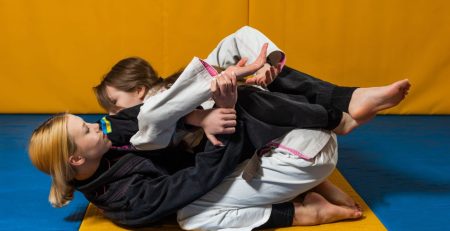

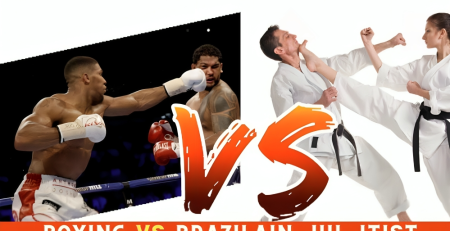
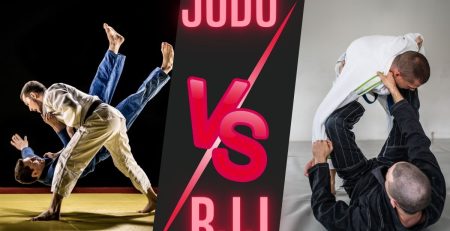
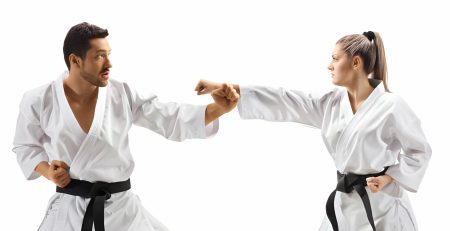
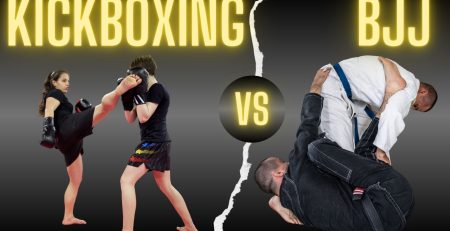

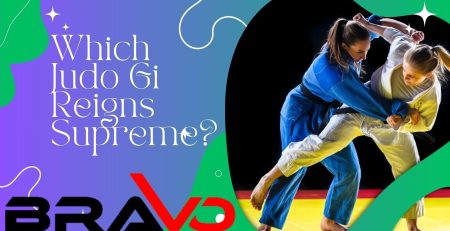



Leave a Reply
You must be logged in to post a comment.